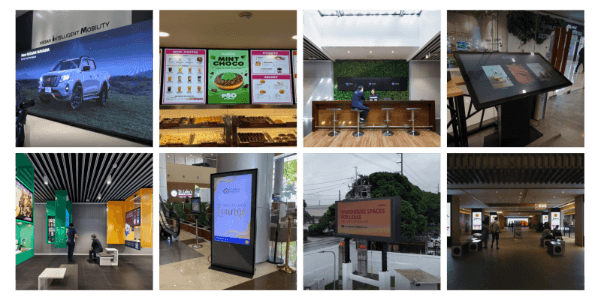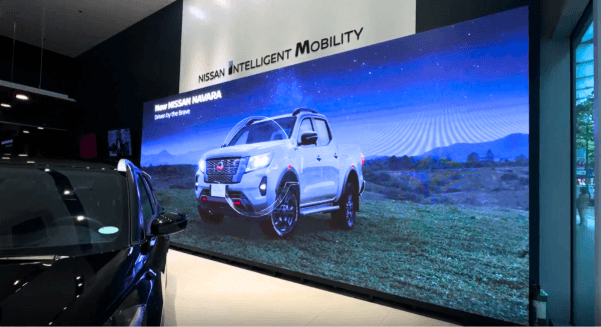Companies are always looking for ways to stand out in today’s fast-paced market. LED digital display signage creates a flat panel video display by using a collection of light-emitting diodes as pixels. They can be used outdoors and are suitable for store signs and billboards that are visible even in direct sunlight due to their brightness.
What Exactly is LED Signage?
LED signage is a modern display technology that uses light-emitting diodes (LEDs) to project vivid, colorful text, images, or videos. The following are all typical applications for these displays: promotions, wayfinding, advertising, and brand recognition.
What is the difference between LED and LCD?
The main difference between an LED and LCD monitor is the screen technology used to produce the projected image. LEDs (light emitting diodes) are more energy-efficient, thinner, faster, have more contrast, and last longer than LCDs. Video walls can be made seamlessly because LED displays don’t need frames around the screen like LCD panels do.
In conclusion, various types of display technologies are referred to by the terms liquid crystal display (LCD) and light emitting diode (LED). Technically speaking, LEDs use backlighting technology instead of fluorescent tubes. LED monitors are more durable and provide higher-quality, sharper images than LCD panels.
How Does LED Signage Work?
You don’t have to be a tech whiz to understand how digital signage works. Each LED digital display contains tiny light modules that work together to produce high-resolution images. The necessary components include:
- The main lights that create the pixels on the screen are called LED modules.
- Controllers: These oversee the way the content is shown.
- Software: Companies can remotely upload, schedule, and update content with a content management system (CMS).
Because it can change messages in real time, a programmable LED display is ideal for promotions or announcements that need to be made quickly.

Types of LED Signage
There is no one-size-fits-all solution when it comes to LEDs. The following are the most widely used types of LED signs:
- Indoor LED signage is ideal for stage backdrops, malls, and lobbies.
- Outdoor LED displays are used on storefronts, building facades, and highways because they are made to resist weather and sunlight.
- Scrolling text signs are excellent for making announcements in convenience stores, banks, and clinics.
- Video walls are frequently used for large-scale visual impact at events, concerts, or exhibitions.
- Whether it’s special sizing or animation styles, custom LED signage can be made to fit your brand’s requirements.
Benefits of Using LED Signage
Why are businesses adopting commercial LED signs so frequently? since it provides true value. Here’s how:
- High Visibility: LED signs can be seen both indoors and outdoors, day or night.
- Updates to Content in Real Time Change messages instantly to reflect your most recent update or offer.
- Energy-efficient signage: LED lighting uses less energy and lasts longer than conventional lighting.
- Customization & Flexibility: LED signs can be made to fit the voice of your brand in terms of size, animation, and content.
In addition to being aesthetically pleasing, these benefits increase foot traffic, sales, and customer interaction.
Industries Using LED Signage Effectively
LED technology’s adaptability allows it to be used in practically any industry:
- LED Signage for Retail: Make use of displays to draw attention to new product releases, promotions, and store branding.
- LED restaurant signage can be used to draw customers by showcasing menu items, specials, or vibrant food images.
- Real estate LED Signage: Advertise open houses and listings outside of agency offices.
- Large video walls can be used for crowd interaction and stage backdrops at events and concerts.
- Healthcare LED Signage: In clinics and hospitals, convey announcements, wait times, or safety advice.
Digital signage improves audience engagement for both hospital administrators and boutique owners.
Things to Consider When Choosing LED Signage
Before spending money on an LED screen, you might want to think about the following:
- Resolution: Clearer images are produced by higher pixel pitch, particularly when viewed up close.
- Screen Position & Size: Is it intended for outdoor or indoor use? How far will your audience be able to see it?
- CMS (content management system): Select a system that facilitates remote content updates.
- Budget & Maintenance: Take after-sales assistance, electricity, and installation into account.
- Supplier Reputation: Seek out a reliable LED signage provider in your city that provides local support and warranties, such as Nyxsys.
Thinking About Digital Signage?
At Nyxsys, we know LED signage works well for businesses big and small. It helps you convey bright, clear messages that you can change at any time.
Whether you want to draw more attention or share special deals, our LED signage makes it easy.
Want to learn how Nyxys can help your business with LED signage? Explore your options with us today.

